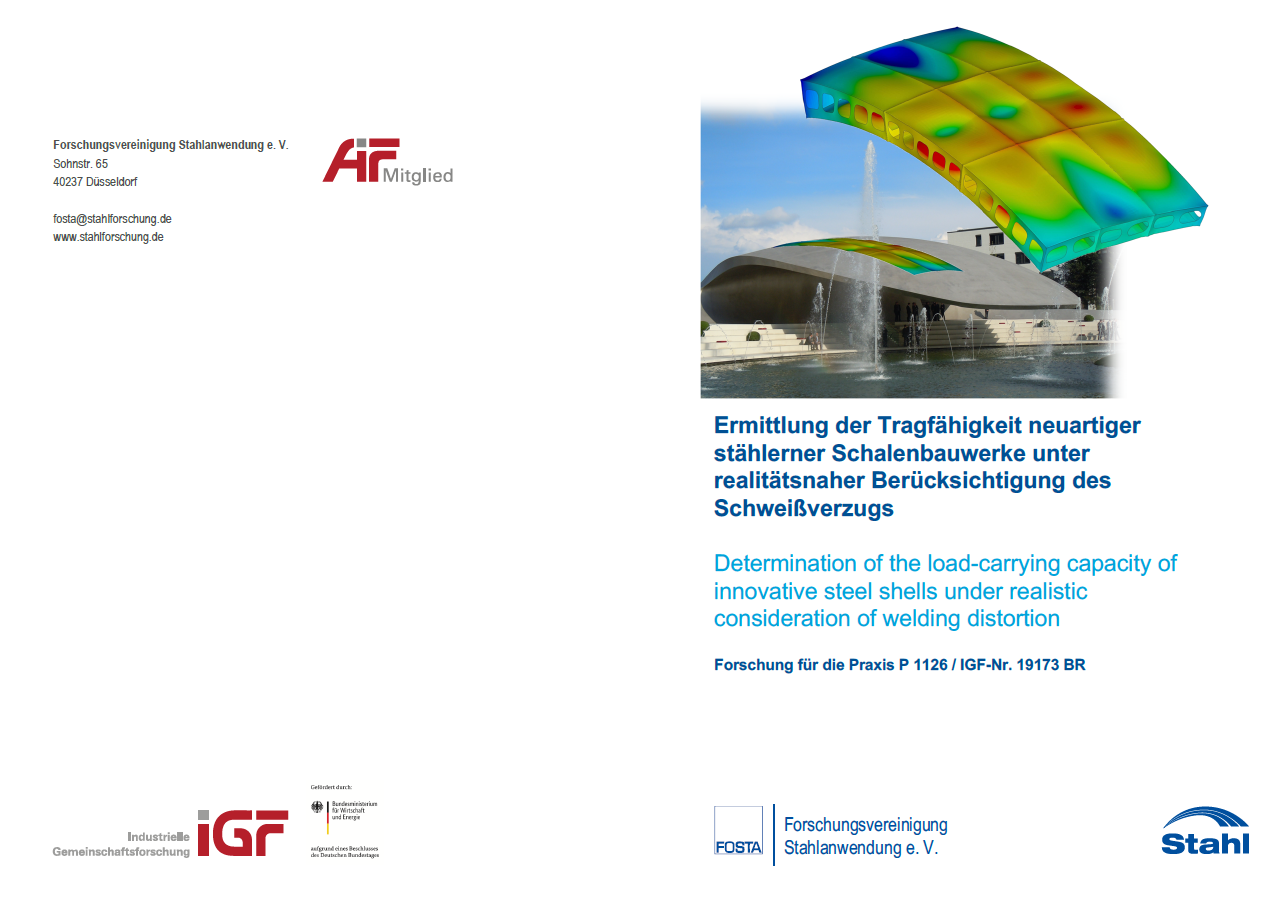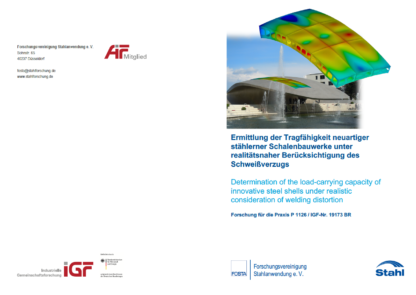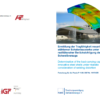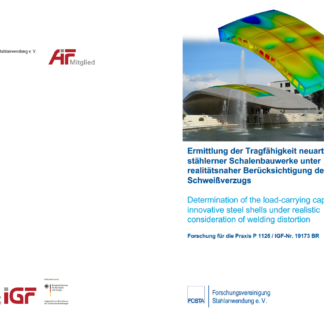Description
P 1126 – Determination of the load-carrying capacity of innovative steel shells under realistic consideration of welding distortion
Stiffened shell structures (also Monocoque) are now being increasingly used in steel structures. Due to the use of slender metal sheets, the buckling influence needs to be taken into account. A geometrically and materially nonlinear analysis of the imperfect shell (GMNIA) corresponds to the theoretically highest degree of realism. The quality of proofs depends decisively on whether the imperfections introduced into the computational model adequately describe the effect of the imperfections of real structures.
Today, it is basically possible to reliably predict welding process influences by means of welding simulation. The extensive modelling and high computational effort, however, prevent its practical application. The analytical-numerical hybrid model developed at the LFT provides a practical methodology for the welding simulation of large structural
components. From the point of view of the design an interface to the welding simulation is to be realized and approved.
The aim of the project is thus to provide a robust and reliable calculation method for the computer-aided design by GMNIA applicable to welded shell structures. In comparison to available simplified methods, this is realized directly and for the first time through hybrid approaches for the detection of welding process influences.
The analytical numerical hybrid model was used to calculate the welding imperfections. The underlying analytical model had to be extended in order to be able to calculate the welding imperfections, which arise during welding of curved structures. Based on numerical variation calculations, a detection function was derived which takes into account the curvature and the resulting reduced stiffness.
The hybrid model has already been successfully applied to a large number of components of varying complexity. The focus, however, was on welding distortions. Little attention was paid to the local stress state in the seam area. However, it influences the loadbearing behaviour of welded components. Both the verification of the stresses calculated with the hybrid model with the results from thermomechanical calculations and the validation with X-ray graphic measurements showed good agreement. A new cross-linking strategy was developed to further increase this. Since in most cases the stiffeners are welded on both sides, an influence function was derived based on the source method, which takes into account the time between the two welds and records their effect on the plastic strains.
Published in:
August 2020
Authors:
Prof. Dr.-Ing. habil. H. Pasternak, Dr.-Ing. Ch.Stapelfeld, Dr.-Ing. B. Launert, Prof. Dr.-Ing. habil. V. G. Michailov, Dr.-Ing. N. Doynov, C. A. Kaya




